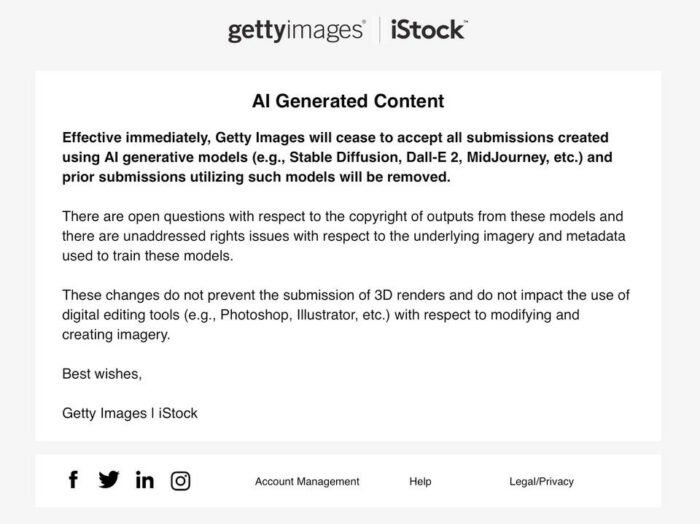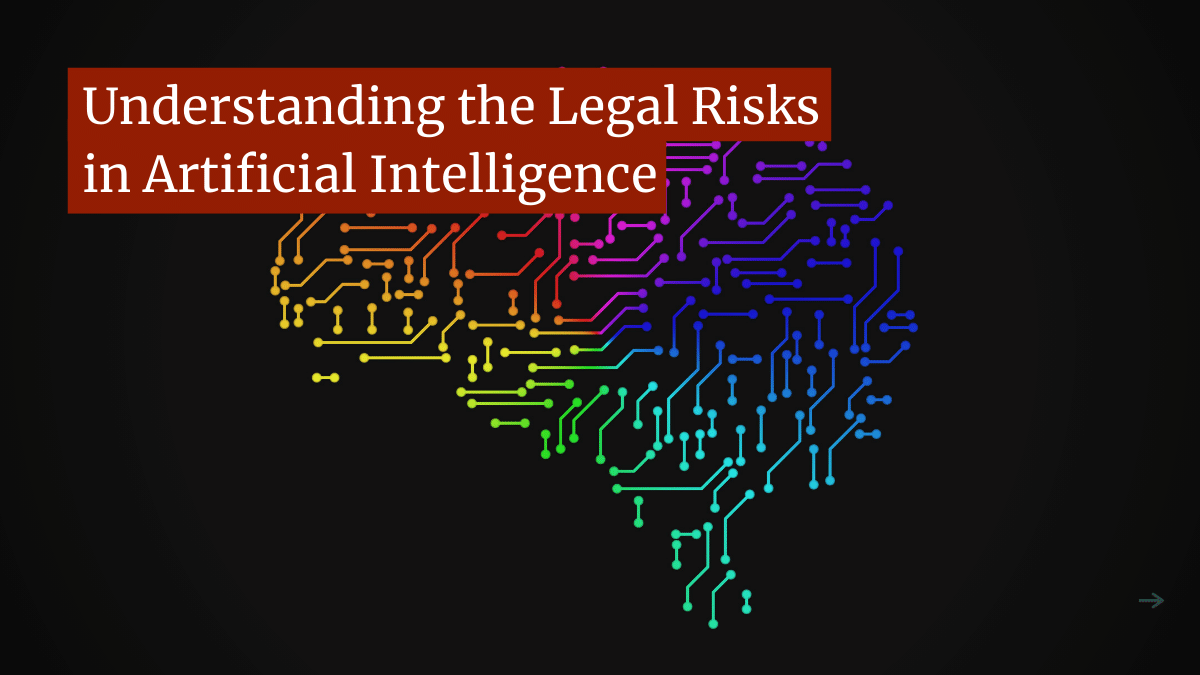Why Getty Banned AI Images (For Now)

Yesterday, Getty Images and iStock have announced that they are following in the footsteps of other art sites, including NewGrounds and Inkblot, in banning artwork generated by artificial intelligence (AI) from their service.
According to Getty’s announcement, “There are open questions with respect to the copyright of outputs from these models….” They further add that the move is to protect their customers from potential legal issues down the road.
Getty noted that this ban does not prevent the submission of 3D renders nor does it prevent the use of any digital editing tool, such as Photoshop or Illustrator.
It’s easy to look at this as another example of a battle line being draw with regards to AI-generated art. However, it’s a bit more complicated than that.
As divisive as AI-generated art is, the Getty ban is very different from the ones we discussed earlier this month. The reason is that Getty works different from sites like NewGrounds and their lack of comfort with AI stems almost entirely from legal concerns, not quantity or quality concerns.
To that end, it’s worth looking at why Getty, most likely, chose to ban AI images and how that could impact AI art moving forward.
Why Getty is Different

Sites like Newgrounds and Inkblot accept user-submitted content and host it on their servers. Because of this, they enjoy a great deal of protection under the Digital Millennium Copyright act (DMCA) should some of that content turn out to be infringing.
In short, under the DMCA, as long as they retain a DMCA agent and remove allegedly infringing content when properly notified, they will be protected under the law.
However, Getty is in a different position. First off, they have editorial control over the images and then license those images to customers. This greatly increases their legal exposure as they could face repercussions both from directly from artists and their customers.
After all, part of Getty’s service they provide is that they promise customers that they hold the rights to the images they are licensing and, because of that, customers won’t face legal consequences for using Gettty-licensed works.
But, with AI, that becomes a problem. All AI systems are trained on earlier works, and how much of those earlier works make into the images that it outputs depends entirely on the AI and the prompt it was given.
The fear is that the AI could “generate” art that is so similar to some of the work it was trained on that it could represent a copyright infringement. However, there’s simply no way for the human creator of the AI work, let alone Getty, to know if that’s a possibility with a given image.
As such, Getty has decided to avoid the issue altogether for now, banning AI art from its service.
Not Just Copyright
Though copyright gets the lion’s share of attention when it comes to legal issues AI art faces, there are other potential problems too.
For example, AI can be used to create images of real people in very unreal situations. We saw this recently with an AI app that swapped the face of actors in porn films with other people, creating the illusion that a different person was in the footage.
Though the AI that performed that was shuttered, there’s no reason other tools couldn’t do the exact same thing.
However, it isn’t just pornography. AI can generate images of individuals in a variety of compromising situations that never happened such as getting arrested, supporting/speaking hate speech and so forth.
All this raises issues of defamation. This is especially difficult for Getty, as many of their customers are news agencies, seeking photographs to accompany their reporting.
Getty is in the business of licensing images that are free of legal issues. In short, they’re selling legal certainty. AI images are the antithesis of that, generating not just countless images, but an equal number of legal unknowns that Getty is not prepared to take a chance on at this time.
To be clear, it’s not certain that AI images are committing copyright infringement or doing other unlawful things, it’s that we don’t know if they are. Getty, for their part, has simply decided that the risk and uncertainty is too great to justify carrying such images.
That, in the end, is why this important. If anyone could afford to navigate through these legal uncertainties, it would Getty or another institution like them. The fact Getty is backing away indicates a strong unwillingness to do so.
Bottom Line
It’s worth noting that other stock photo agencies, including Shutterstock, currently have no rule against AI artwork. As such, there is currently a divide in the industry on how to handle this question.
Note (9/26/2022): Apparently, prior to Getty’s announcement, Shutterstock began removing AI images and appears to have banned them as well.
But Getty is a giant in the stock photography space and provides indemnification for any copyright issues that arise from the use of their licensed images. In short, if AI images were allowed on the service, Getty would be the one taking the legal risk, not its customers.
It’s telling that Getty looked at the current legal climate AI art exists in and simply decided that the risk was too great. From where Getty sits, there are too many unknowns in this space and too little benefit to take the risk.
Obviously, this could change, but AI artwork would need greater legal certainty for it to and Getty has made it clear that they don’t want to be the one of the parties litigating those cases.
Want to Reuse or Republish this Content?
If you want to feature this article in your site, classroom or elsewhere, just let us know! We usually grant permission within 24 hours.
